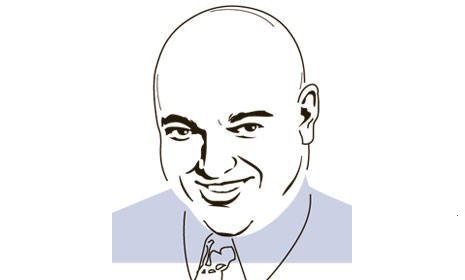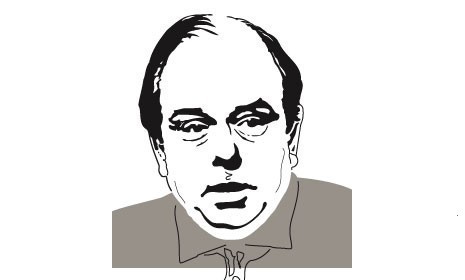We need bigger deficits
In normal times, deficit spending has all sorts of negative effects on economic activity. These are not normal times
As the disappointing May job numbers confirm, this is still an exceptional time — a time in which many of the normal rules of the Dismal Science are changed and transformed. It is a time for not normal economics but rather “depression economics.” The terms on which the U.S. government can borrow now are exceptionally advantageous. And because of high unemployment the benefits of boosting government purchases and cutting taxes right now are exceptionally large.
The result is that the costs of borrow-and-spend policies are overturned for the short run — indeed, for as long as the current economic crisis of high unemployment lasts, which may well mean that the short run is not very short.
In normal times, a boost to government purchases or a cut in taxes produces a limited increase in production and employment while adding a substantial increase to the national debt. The increase in debt raises interest rates, which crowds out productivity-increasing private investment spending and, dollar for dollar, leaves us poorer after the effect of the stimulus ebbs.
The Week
Escape your echo chamber. Get the facts behind the news, plus analysis from multiple perspectives.

Sign up for The Week's Free Newsletters
From our morning news briefing to a weekly Good News Newsletter, get the best of The Week delivered directly to your inbox.
From our morning news briefing to a weekly Good News Newsletter, get the best of The Week delivered directly to your inbox.
The borrowing must then must be financed at a significant interest rate, and thus paid for with higher taxes, which reduce incomes by increasing the wedge between the private rewards and the social benefits of expanded production.
It’s nasty business.
Normally, only government spending initiatives or tax cuts that promise a high value for the dollar are worth undertaking, but things are different now.
However, right now, as best we can tell, an increase in federal spending or a cut in taxes will produce (in the short run) no increase in interest rates and hence no crowding-out of productivity-increasing private investment. Indeed, government spending that adds to firms’ current cash flow may well boost private investment and so leave us, dollar for dollar, richer after the effect of the stimulus ebbs.
A free daily email with the biggest news stories of the day – and the best features from TheWeek.com
Why?
Because our debt today can be financed at extremely low interest rates — 1.83 percent if financed via 30-year TIPS, and even less in expected real interest if financed over a shorter horizon.
In normal times, only government spending initiatives or tax cuts that promise a high value for the dollar are worth undertaking. Now, however, things are very different. Let’s run through the arithmetic.
Normal Economic Arithmetic
Consider a $100 billion boost to government purchases or cut in taxes financed by borrowing from abroad. In a normal year, the Federal Reserve will worry about inflation, and raise interest rates somewhat to offset the inflationary impact of the fiscal boost. The multiplier will thus be something like 0.4 — we will spend $100 billion on government purchases or tax cuts and gain perhaps $40 billion in extra production and associated employment out of it.
But there are costs. First, the added national debt. The national debt will not rise by the full $100 billion: Those who earn that extra $40 billion will pay taxes — perhaps $16 billion. Thus the net impact on the government debt will be that by spending an extra $100 billion we will have added some $84 billion to the national debt. That debt must then be amortized. At a 4 percent per year long-run real rate of interest on government bonds, amortizing that debt will cost Americans $3.4 billion a year.
Second, the higher tax rates needed to raise the extra $3.4 billion will also exert a cooling supply-side effect on economic activity. With higher tax rates, people will have greater incentive to spend time and energy dodging their taxes rather than doing useful work. If this effect amounts to roughly one-third of the revenue raised, then we have to add to the total cost an additional $1.1 billion shortfall from the time and energy that would have been used to produce stuff but that will instead be devoted to dodging taxes.
Third, there is another effect. The Federal Reserve’s fight against inflation, which demands an increase in interest rates, will have reduced investment. Due to the $100 billion in government purchases, perhaps $40 billion of private investment that would have been made won’t be made — it will be crowded out. As a result of the lower capital stock, some $4 billion a year of income that would have been earned won’t be. Thus the net cost of the $100 billion in government spending will be a reduction in Americans’ disposable incomes of $7.4 billion per year.
That’s an unattractive bargain. It would allow us to purchase $40 billion of extra production and income this year at the cost of a reduction in incomes of $11.9 billion — call it $12 billion — in every year in the future. That is a usurious annual real interest rate of 30 percent. No sane economist would recommend a policy with such high costs and meager benefits. Expansionary deficit-boosting fiscal policy is, or ought to be, simply a non-starter in normal times.
Depression Economic Arithmetic
But right now that arithmetic doesn’t apply. We have instead depression economic arithmetic. And in depression economic arithmetic things are very different.
First, more government spending does not lead the Federal Reserve to raise interest rates to fight inflation. The Federal Reserve has pushed interest rates to the floor and wishes it could drive them into the basement — to –5 percent per year or so. Thus the multiplier on the government’s spending is not 0.4 but more like 1.5. We do not get $40 billion of additional production and employment for $100 billion; we get something closer to $150 billion. And there is no crowding out of private investment; on the contrary, there is likely to be crowding in. If one-third of the extra production flows through to corporate profits, and if one-quarter of those extra corporate profits are then invested in projects paying a pretax net real rate of return of 8 percent per year, then future productivity is boosted to the tune of $1 billion a year.
Second, that boost to production creates a substantial reflow in taxes that makes the spending program a bargain. We get $150 billion of added production leading to $60 billion of additional tax revenue, leading to only $40 billion in increased debt.
Third, the financial crisis has created a configuration of interest rates that means that the government can borrow at uniquely favorable terms. Suppose we borrow at 1.83 percent – we’ll round it to 2 percent — per year in real terms for the next 30 years. On those terms, amortizing the $40 billion of additional government debt requires only $0.8 billion a year in additional interest payments and taxes. Even adding in our one-third excess burden brings us only to $1.07 billion a year in amortization costs.
Now, net all this out.
The increased cash flows to businesses boost future private-sector incomes by $1 billion a year. The costs of amortization reduce them by $1.07 billion a year. The net cost? $70 million per year. So to gain $150 billion of increased production and incomes this year we incur a $70 million a year cost going forward. That means that using expansionary fiscal policy to boost output today is an investment worth doing at any interest rate greater than 0.05 percent per year.
That is not quite a free lunch — they take away my union card as an economist if I start claiming that free lunches exist. But it is certainly a value meal. We are getting more income and employment now — when we really need it — in return for sacrificing only a tiny bit of production each year in the future, when we believe that we will be richer and will mind the reduction significantly less.
The Limits of Depression Economics
Thus it is a no-brainer that we ought to be doing more fiscal stimulus. Each dollar of missing production and each unemployed worker right now is much, much more painful to the country and a much greater loss to human welfare than a dollar of missed production and an unemployed worker in normal times.
The argument for more spending is airtight as long as the arithmetic holds out. That is, until:
• further increases in the deficit lead to rising expectations of inflation, leading the Federal Reserve to raise short-term interest rates, which then crowds out private-sector investment spending;
or
• further increases in the deficit lead to pressure on the federal government’s debt capacity, so that we can no longer finance additional federal government debt at such extraordinarily advantageous interest rates.
Back in December 2008 the incoming Obama National Economic Council feared that an increase in the proposed size of the Obama stimulus program, the ARRA, from $800 billion to $1.2 trillion would bring these factors into play. It is now clear that they were overly pessimistic, in large part because they were overly optimistic about the state of the economy.
Right now, bad politics is undermining good policy, hurting the American economy and legions of unemployed workers. It is long past time for another stimulus package.
Brad DeLong is a professor in the Department of Economics at U.C. Berkeley; chair of its Political Economy major; a research associate at the National Bureau of Economic Research; and from 1993 to 1995 he worked for the U.S. Treasury as a deputy assistant secretary for economic policy. He has written on, among other topics, the evolution and functioning of the U.S. and other nations' stock markets, the course and determinants of long-run economic growth, the making of economic policy, the changing nature of the American business cycle, and the history of economic thought.
-
 Wilde Cambridge: home-away-from-home in a prime city spot
Wilde Cambridge: home-away-from-home in a prime city spotThe Week Recommends This laid-back aparthotel is the perfect base for a weekend of exploring
-
 The best alcohol-free alternatives for Dry January
The best alcohol-free alternatives for Dry JanuaryThe Week Recommends Whether emerging from a boozy Christmas, or seeking a change in 2026, here are some of the best non-alcoholic beers, wines and spirits to enjoy
-
 A lemon-shaped exoplanet is squeezing what we know about planet formation
A lemon-shaped exoplanet is squeezing what we know about planet formationUnder the radar It may be made from a former star
-
 The FCC needs to open up about LightSquared
The FCC needs to open up about LightSquaredfeature A politically-connected company that wants to build a massive 4G internet network seems to have benefited from some curious favors from the feds
-
 Do you believe in magic?
Do you believe in magic?feature The House speaker's debt-ceiling proposal is smoke and mirrors. That's what's good about it
-
 Will both sides blink on the debt ceiling?
Will both sides blink on the debt ceiling?feature With the financial credibility of our nation at stake, and both parties facing massive political risks, lawmakers might agree to a grand bargain after all
-
 Dine and dash?
Dine and dash?feature Politicians are jockeying for advantage as the bill comes due on our gaping national debt. But without an agreement soon, we'll all be stuck with the check
-
 The GOP's dueling delusional campaign ads
The GOP's dueling delusional campaign adsfeature Slick ads attacking Jon Huntsman and Tim Pawlenty as reasonable moderates show just how divorced from reality today's Republican Party is
-
 Bibi turns on the charm
Bibi turns on the charmfeature In the fight over Israel's borders, Netanyahu takes the upper hand
-
 Get rich slow
Get rich slowfeature A cheap U.S. dollar is no fun, but it will get the job done
-
 Bin Laden, the fringe Left, and the torturous Right
Bin Laden, the fringe Left, and the torturous Rightfeature The killing of the architect of September 11 has provoked predictable remonstrance from the usual suspects